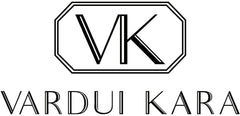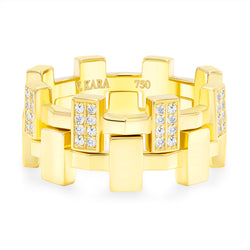This brief article is going to cover the most common jewelry tricks of the trade, but before I begin telling you about them, I want to make it clear that there are many reputable jewelers (including myself) who do not employ these tricks. Therefore, the following tricks do not apply to them:
1. Pre-Mounted Diamonds: When shopping for an engagement ring, jewelers may show you already preset mountings to help you select a style. Generally, pre-mounted diamonds are of lower quality and not certified. Some jewelers may set lower quality diamonds into mountings because it can help make them look better and people tend to ignore diamond quality in a mounting. You never know, the mounting could mask a chipped diamond or flaws.
2. Lighting Hides Fluorescence: Fluorescence is one of the characteristics listed on a diamond certificate. Under bright jewelry store lights, a diamond with fluorescence may look fine. However, when you look at it under natural sunlight it may make that diamond look milky, foggy, hazy, or yellow. Under ultraviolet light, such as black light, it will emit a soft glow. Always ask to view a diamond in different lighting before purchasing.
3. Not Micro-Scoping the Diamonds: If a jeweler doesn't give you the opportunity to view and inspect the diamonds up close under a microscope or jeweler's loupe, then don't buy it from them. A jeweler should show you how to properly hold a jeweler's loupe. The reason why some jewelers don't let you scope their diamonds is because their diamonds are low quality and they're hoping you don't care or notice.
4. Inflated Discounts: If the jeweler is saying the ring has been discounted by 50% or more, be wary. The profit margin in jewelry is not high enough to make a discount like that probable. Also, be on guard for a high appraisal and a low selling price.
5. As for the total carat weight of the center stone and not the whole ring with the diamonds around it. Buy a stone with its certification. GIA grades more strictly than EGL. When you get your ring appraised, it should state the center stone carat weight separately from the other stones around it.
6. What is a simulated diamond? Sometimes you'll see a product titled as "Diamond Ring" online and when you take a closer look at the description, it states that it's a "simulated diamond". Simulated diamonds, also known as diamond simulants, are stones created in a lab to mimic or simulate the look and feel of a mined diamond. There are many different types of simulated diamonds, all of which vary in composition, quality, and appearance. Some of the most common stones are white topaz, quartz, leaded glass or crystal, lab-created diamond simulants, and cubic zirconia. Lab-created diamond simulants and cubic zirconia are often the most used substitutes for diamonds and have become more popular in engagement ring trends.
There you have it - some of the most used tricks of the trade by some jewelers. If you have any questions or feel you've been tricked before, comment below or send an email to info@varduikara.com. Share you store with me!



Leave a comment